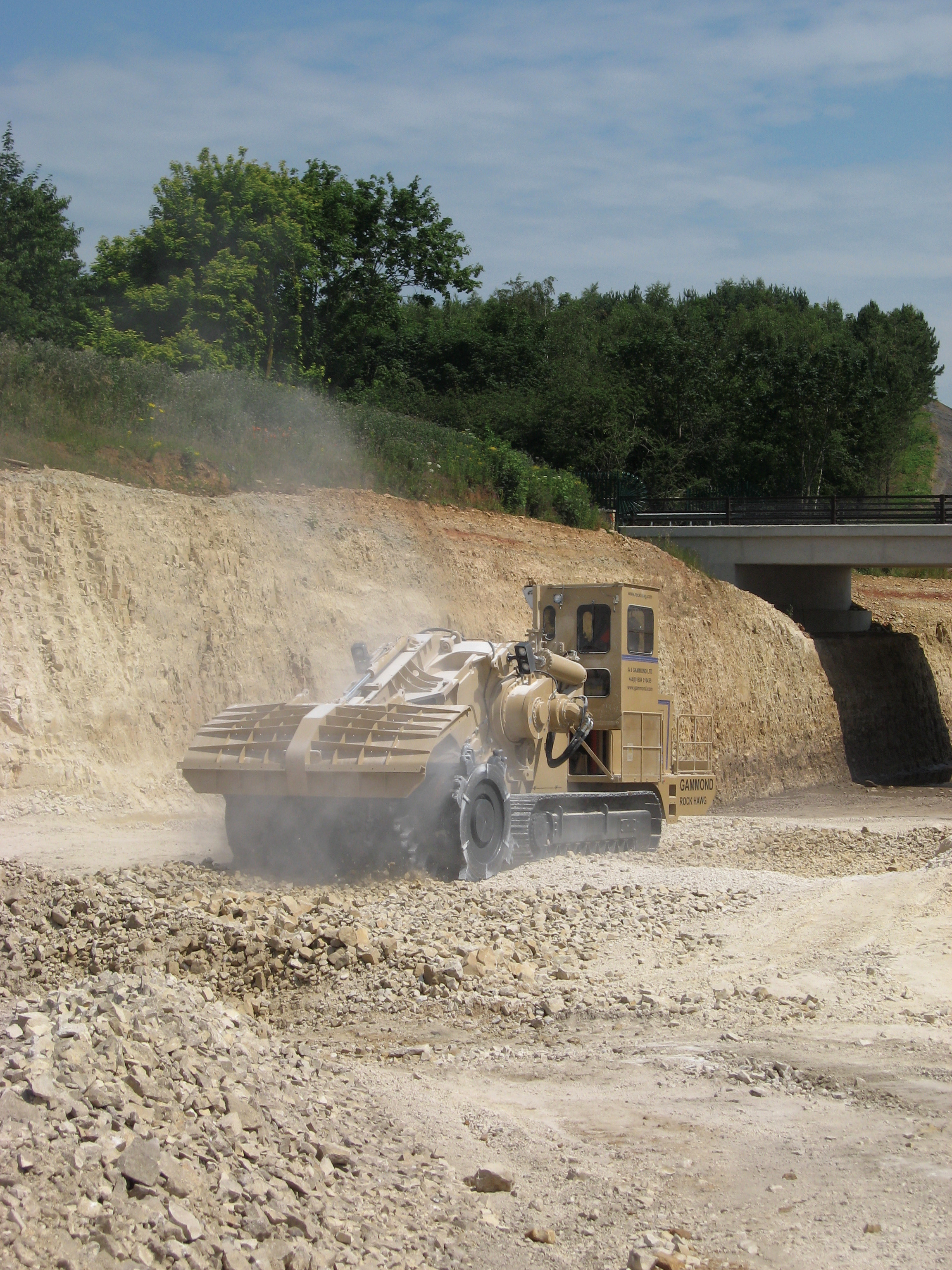
Whitwell Quarry has been described as a two-in-one quarry because its products are put to very different uses, Patrick Smith reports
Shane Tompkin has a simple but effective approach to running
"We will try anything to gain materials from this quarry, but if it is not working out then it has to go pretty quickly," said the manager who has been at the quarry for seven years.
Indeed, he sees the dolomite limestone quarry, near the town of Worksop in Nottinghamshire, UK, as something of a "development area" for Lafarge, where methods and machines are tried and either kept, considered for future use or dropped.
"Anything new we try here and which appears to have merit is shared with Lafarge worldwide," he said.
As he is talking a new Italian-built 126tonne Tesmec Rock Hawg TRS1475, the first of its type in Europe, is being put through its paces at the quarry along with its little brother the 50tonne TRS1150. Both supplied through distributors Westquay of Warrington, north-west England (also distributors for
"Bruce [Gammond, sales director of A J Gammond] got the contract. He came and said it would take two weeks and out came the rock and we got a first class job," said Tompkin. "We did try picks on the end of excavators but they were not that effective."
The Rock Hawg TRS1475 consists of a large main tractor unit with a toothed drum attachment to the rear of the machine. Built with a trench width capacity of up to 3.81m it can trench working areas in a series of passes and is capable of processing up to 300tonnes/hour. Maximum trench depth is 600mm and the drum can perform at speeds of 21, 30 or 39rpm. The 50tonne Rock Hawg TRS1150 has a trenching width of 2.55-2.9m and trenching depth of up to 600mm.
The bonus in using the Rock Hawg was that the material ripped up by its toothed drums was useable for resale and of such a size that it did not require primary crushing, a job normally done on site by an original 1957 Hadfield, which is capable of 600tonnes/hour. This helped self-fund the extraction of the material.
"The T1150 was great for what we required but the new Rock Hawg has real potential for quarrying purposes as an alternative to blasting, a very specialised process here that allows us to work near the crags. We would like to think we can get 300tonnes/hour useable from the Rock Hawg. I am excited to see how it works," said Tompkin.
Indeed, he is always mindful that the quarry has a village as its neighbour and is not far from the much-visited Cresswell Crags, a nearby limestone gorge honeycombed with caves and smaller fissures.
Quarrying has taken place in some form or another for centuries in the Whitwell area, and about 50% of the material from the quarry goes literally next door to the kilns of the
The other 50% of material produced at Whitwell is aggregates for concrete making and roadworks.
Whitwell Quarry has been owned by Lafarge since 1957, and in the last year 50million tonnes of rock has been removed, with production currently at around 1.5million tonnes annually. "The material here is chemically very pure, and there are only a few places in England where this exists," said Tompkin.
It was while blasting for material for the kilns that a hard limestone bench was discovered underneath and this is used for aggregates.
"We have consent for the present quarry for the next seven years and there are another 52 years of reserves and the new haul road will improve access to reserves."
The company uses a mobile Lokotrack crusher from













